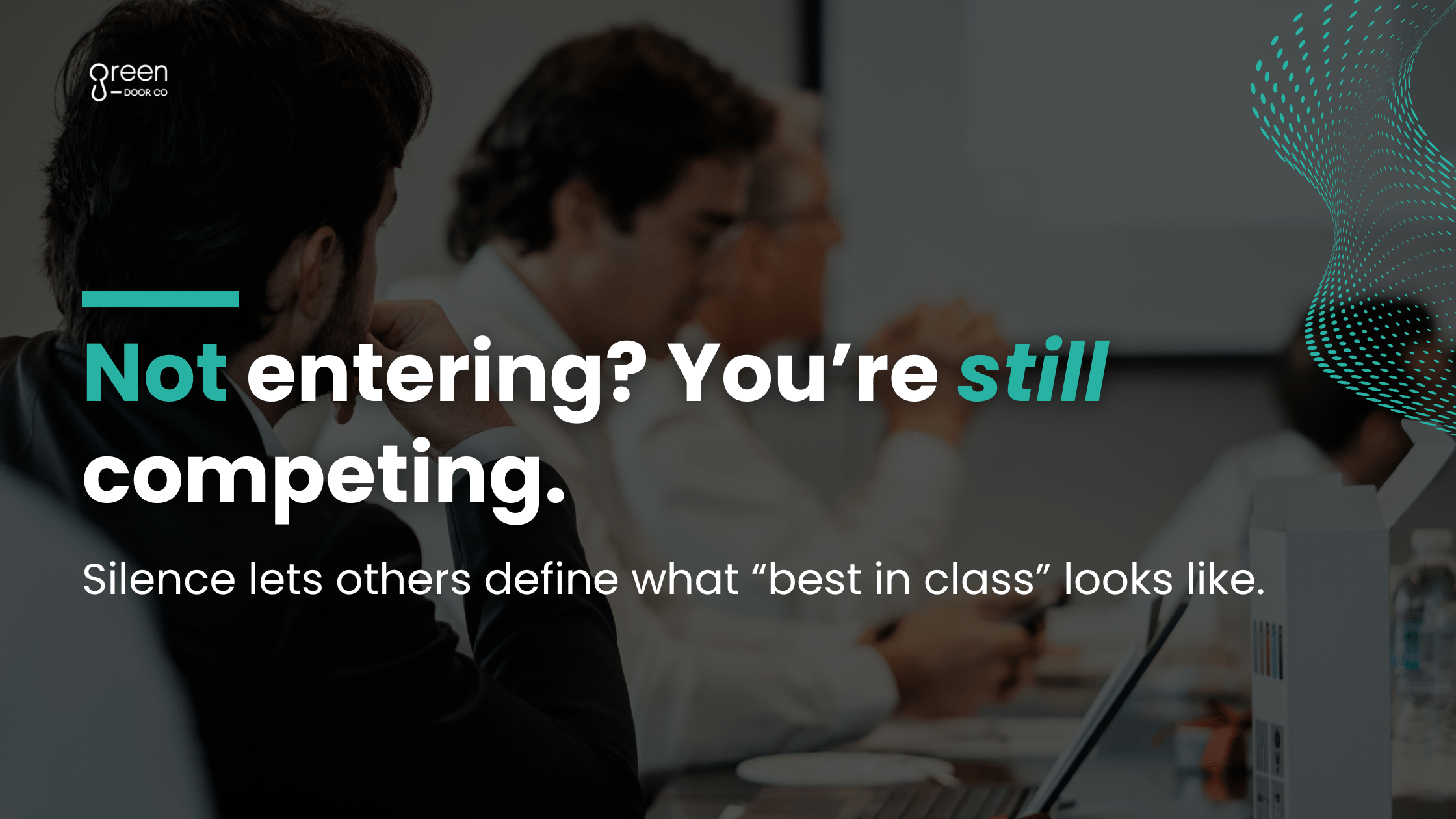You’ve done it again. Another business awards season, another shortlist. Your logo sits proudly among the finalists, your team celebrates, and your marketing posts a humble-brag on LinkedIn. But when the winner’s name is called, it’s not yours.
If that scenario feels familiar, you’re not alone. Many strong businesses reach finalist status again and again, a signal that they’re doing plenty right, yet somehow never cross the final threshold. The question is: why?
Let’s unpack the patterns behind the “almost there” entries, and how to shift from shortlisted to standing on stage.
1. Is shortlisting the real win? (And why you’re still missing the gold)
First, a reality check: being shortlisted is no small feat. It’s powerful third-party validation that tells the market your work is exceptional. Businesses that promote their finalist status see a measurable increase in brand visibility and trust, often resulting in more sales enquiries and stronger recruitment outcomes.
That said, repeated shortlisting without a win signals a specific issue: your entry is excellent but not differentiated. It meets the criteria, but lacks the final degree of conviction, clarity, or distinctiveness that elevates it above the rest.
2. Are you just answering the questions?
One of the most common pitfalls is mistaking compliance for competitiveness. Too often, entries answer what’s asked, but not what’s really being judged.
A finalist entry might say:
“We increased client satisfaction through our new customer service process.”
A winning entry says:
“Our new customer service framework increased our Net Promoter Score by 25 points — placing us 10% above the industry average.”
The difference is precision. Judges need evidence of excellence, not adequacy. The data and detail give them confidence that your success is measurable and meaningful.
3. Is your narrative too dry?
A technically sound submission can still fail if it reads like a report instead of a story. The best entries blend data with a human-centred narrative, one that follows a clear arc of challenge, solution, and impact.
Judges are human. They remember stories that move them. For instance, a professional services firm might note that its new mentoring programme improved retention by 30%. A stronger version adds that the programme helped early-career women gain confidence, leading to two internal promotions and a measurable uplift in team engagement.
Facts tell. Stories sell.
4. Are your results loud enough?
Raw numbers rarely win. Context does. Saying you grew revenue by 50% sounds impressive — until you realise the sector average was 45%. But if that same growth occurred in a flat market, it becomes remarkable.
Always benchmark your achievements. Compare against industry norms, past performance, or external challenges (such as market shifts or regulatory change). This helps judges understand that your success isn’t just big, it’s significant.
5. Is your supporting material undeniable?
Finalists often overwhelm judges with volume, not value. The best submissions use concise, high-quality evidence that visually reinforces claims, short video testimonials, verified data, clean charts, or case study snapshots.
Think of your evidence as the supporting cast: it should amplify, not clutter, your main story.
Not sure what supplementary evidence you should include? We’ve compiled a checklist listing the essential stats and evidence every award submission needs to substantiate your story and impress judges.
Get your free checklist here!
6. Where is your uniqueness?
Judges read hundreds of entries that sound broadly similar. To win, yours needs a distinctive hook, a piece of innovation, resilience, or creativity that stands apart.
Ask yourself: if you removed your company’s name, could this entry belong to someone else? If the answer is yes, you haven’t identified your secret sauce. Pinpoint and amplify that element unapologetically.
7. Showcasing scalability and vision
Winning entries don’t just look back, they look forward. Judges want to reward potential as well as performance. Including a brief three-year outlook shows you’re not only proud of your achievements but also prepared for what’s next.
Connect your project’s outcomes to your future strategic goals, growth, innovation, or community impact. This signals maturity and long-term thinking.
8. Tailoring the submission to the scorecard
One subtle but critical distinction between a finalist and a winner is alignment with the judging criteria. Judges work from a structured scorecard. The more directly your submission mirrors their language, the easier it is for them to allocate high marks.
Don’t write around the criteria, write to them. Use their wording in your section headings, and echo their stated values (for instance, “impact” or “innovation”) in your examples.
9. Don’t underestimate the power of external review
After multiple submissions, internal teams often suffer from “entry fatigue”. You’re too close to your story to spot what’s missing. A professional third-party review can be transformative.
At Green Door Co, we often review entries from an outsider’s perspective to identify gaps, strengthen narrative flow, and refine the strategic messaging.
10. Leveraging shortlisting for year-round growth
Even without the trophy, finalist status has immense brand value. Use it. Feature the “Finalist” logo on your website, proposals, tenders, and email signatures. Mention it in recruitment campaigns and investor decks.
This kind of consistent credibility-building creates a ripple effect that elevates your brand year-round.
11. Turning a loss into next year’s win
If the award organiser offers feedback (formal or informal) take it seriously. Few things are more valuable than insights from those who actually judged your work.
Focus particularly on comments about “Impact” or “Innovation”. These are usually the categories that separate good from great.
12. Are you entering the right race?
Quantity doesn’t equal quality. Some businesses enter too many awards without a clear strategy. Instead, focus your efforts on the programs most aligned with your goals, whether that’s attracting talent, winning clients, or enhancing reputation.
A targeted approach saves resources and increases your chance of success.
Ready to move from shortlisted to winning?
If you’re consistently hitting finalist level, you’re already in the top tier. With the right tweaks, sharper storytelling, contextualised data, and strategic positioning, that next trophy could be yours.
If you’d like a fresh pair of expert eyes to get you over the line, reach out to the Green Door Co team. We’ve helped hundreds of businesses turn strong entries into award-winning submissions that build credibility, visibility, and long-term growth.








